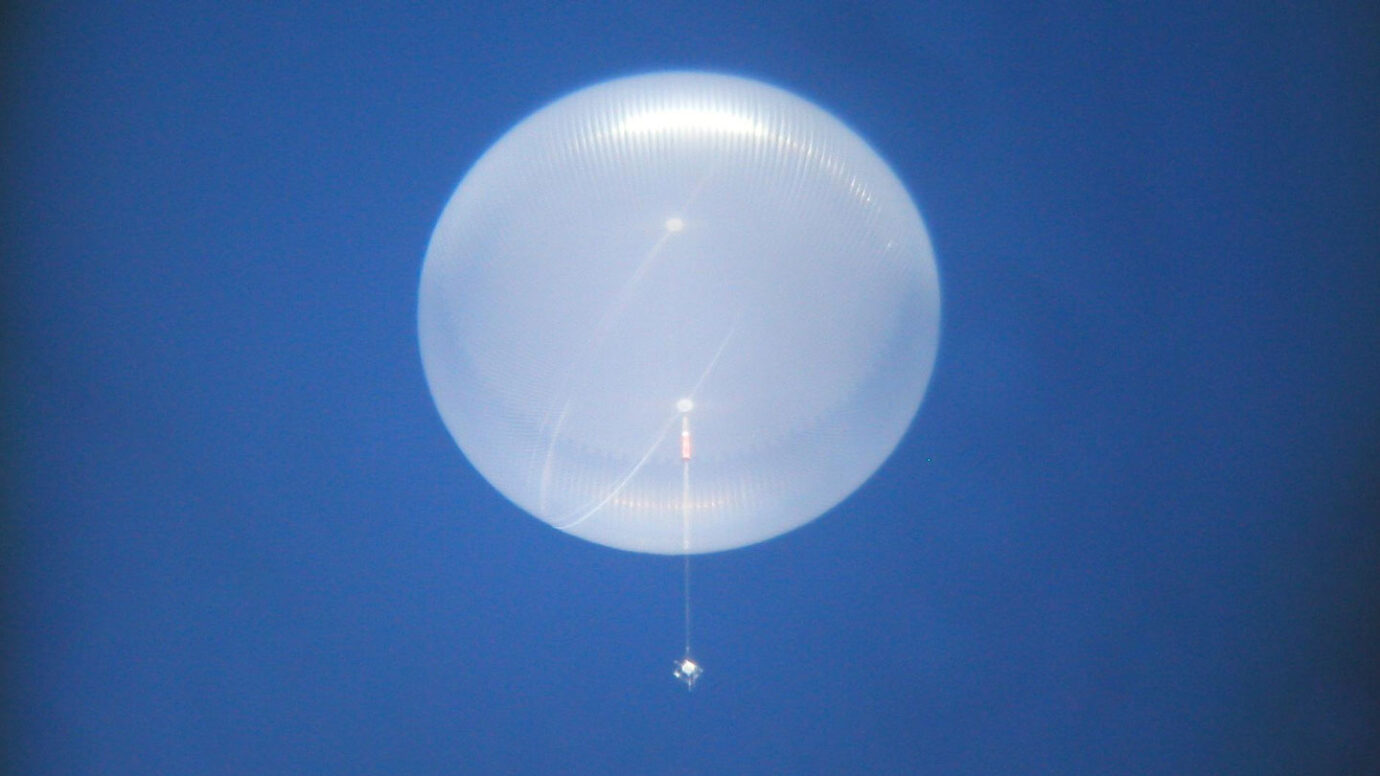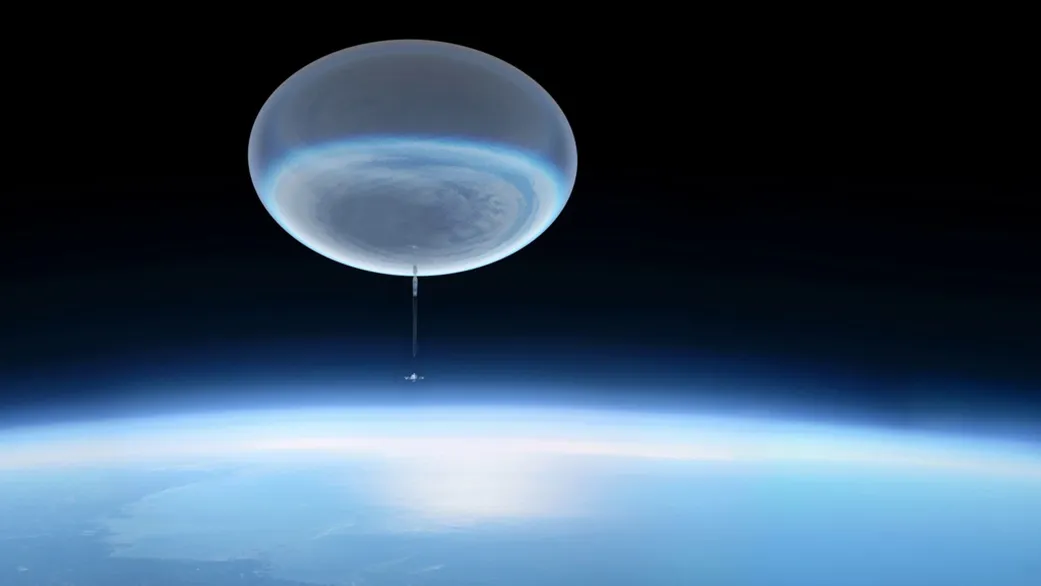Sailing the Skies: How Balloons Push the Boundaries of Scientific Exploration!
In the vast expanse of the sky a multitude of balloons gracefully navigate the currents defying gravity and propelling human ingenuity. From early adventurers to modern-day researchers these ethereal vessels have played a pivotal role in unraveling the mysteries of our world and beyond. In this article we will embark on a captivating journey through time and space to explore the fascinating history and boundless potential of balloon-based research. Join us as we discover the hidden wonders suspended high above.

A Historical Tapestry
The roots of balloon-based exploration trace back to the late 18th century when the Montgolfier brothers launched the world's first hot air balloon in 1783. This groundbreaking achievement ignited humanity's imagination and set the stage for a new era of scientific inquiry. In the years that followed intrepid aeronauts took to the skies pushing the boundaries of human knowledge and paving the way for future discoveries.
One of the most iconic figures in the history of ballooning is Jean-François Pilâtre de Rozier. In 1785 he became the first person to ascend into the heavens on a free-flight balloon. His daring feat inspired countless others to follow in his airborne footsteps opening up new frontiers of exploration. From traversing the skies during wartime to capturing stunning aerial photographs balloons quickly emerged as invaluable tools for a wide range of scientific endeavors.
The Science of Soaring
Beyond their romantic allure balloons offer distinct advantages that make them indispensable in scientific research. Their ability to reach high altitudes for prolonged periods grants scientists unprecedented access to the upper atmosphere which is otherwise challenging to study. Equipped with a variety of instruments these floating laboratories provide a unique perspective on our world enabling investigations into atmospheric chemistry climate change and cosmic phenomena.
One particular area where balloon-based research has uncovered remarkable insights is in the study of cosmic rays. These high-energy particles from outer space present a constant source of fascination for scientists and balloons serve as a crucial platform for measuring and analyzing them. Through projects such as the NASA-funded Super Pressure Balloon-Borne Antimatter Spectrometer (Super-TIGER) researchers have made significant progress in understanding the origins and behavior of cosmic rays shedding light on the fundamental nature of our universe.
Moreover balloons have long been the trusted companions of astronomers seeking to peer into the depths of the cosmos. By lifting telescopes above Earth's turbulent atmosphere these celestial observers gain unparalleled clarity in their observations. NASA's Stratospheric Observatory for Infrared Astronomy (SOFIA) exemplifies this marriage of balloons and astronomical pursuits. Housed within a modified Boeing 747 SOFIA delivers breathtaking images and invaluable data that propel our understanding of distant galaxies black holes and the birth of stars.
Beyond outer space balloons have also revolutionized our understanding of our own planet. From monitoring weather patterns to studying the health of Earth's delicate ecosystems these airborne platforms provide crucial data that drives policies and initiatives aimed at preserving our planet's biodiversity and mitigating the effects of climate change. In the face of rising sea levels melting glaciers and extreme weather events balloon-based research has assumed a vital role in assessing the Earth's rapidly changing environment.
The Ballooning Community
The pursuit of balloon-based research is not without its challenges. One of the significant roadblocks is the ever-present concern over unauthorized surveillance and intelligence gathering through spy balloons. As technology advances the line between legitimate scientific efforts and covert activities becomes increasingly blurred. The fear of national security threats may hinder free access to the skies curbing the potential of these majestic vessels to advance scientific knowledge.
However the ballooning community remains steadfast in their commitment to responsible and transparent research. Organizations such as the Columbia Scientific Balloon Facility (CSBF) and the National Balloon Facility (NBF) diligently work to promote collaboration safety and adherence to strict scientific protocols. By fostering international partnerships and sharing best practices they strive to uphold the integrity of balloon-based research while addressing legitimate security concerns.
In recent years the advent of small low-cost balloons and improvements in remote sensing technology has democratized the field of balloon-based research. Enthusiasts citizen scientists and educational institutions can now participate in projects that were once reserved for specialized research organizations. The rise of global balloon challenges and competitions has further invigorated the public's interest in these captivating scientific endeavors. By embracing this broader community balloon research can tap into a rich tapestry of innovative ideas and diverse perspectives.
The Future of Balloon-Based Exploration
Looking ahead the future of balloon-based research holds immense promise. Technological advancements coupled with improved international cooperation will enable scientists to overcome the challenges posed by spy balloons while safeguarding the integrity of their scientific endeavors. By developing sophisticated detection and tracking systems researchers and regulatory bodies can discern between legitimate research missions and potential security threats fostering an environment where scientific exploration can continue to flourish.
Furthermore the convergence of balloon technology with emerging fields such as artificial intelligence robotics and nanotechnology opens up new avenues for groundbreaking research. Miniaturized sensors capable of capturing an unprecedented array of data while floating high above the Earth have the potential to revolutionize our understanding of weather patterns ecosystem dynamics and atmospheric chemistry. Balloons may even become key players in future space exploration serving as testbeds for technologies designed for interplanetary missions.

Soaring through scientific explorations:
Balloons with their grace and versatility have been soaring through the annals of scientific exploration for centuries. From the daring exploits of early aeronauts to the cutting-edge research conducted today these floating marvels have advanced our understanding of the universe our planet and ourselves. As we navigate the complex challenges of the modern world it is essential to recognize and support the invaluable contributions of balloon-based research. By harnessing the power of human curiosity and technological innovation we can continue to unlock the secrets of the skies and push the boundaries of scientific exploration into uncharted horizons.
From the pioneering days of Montgolfier brothers to the present era of state-of-the-art research balloons have stood as testament to human ingenuity and the insatiable quest for knowledge. Their ability to traverse the skies and capture the imagination of both scientists and the public alike is a testament to the enduring allure of balloon-based exploration. With each new discovery these ethereal vessels forge new pathways to unlock the secrets of the universe offering a glimpse into a future where the unknown becomes familiar and the uncharted becomes our collective backyard. As we gaze upon the uncharted horizons let our hearts soar alongside these brave pioneers as we embark on humanity's next great adventure.

